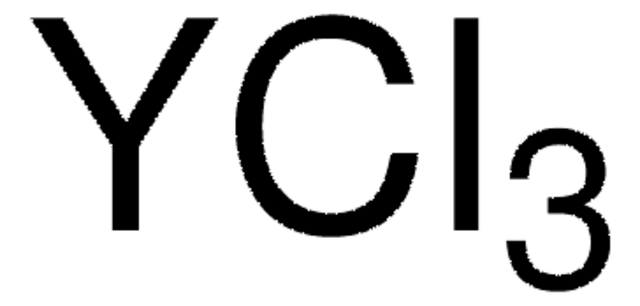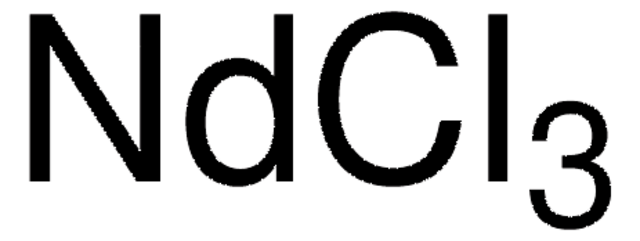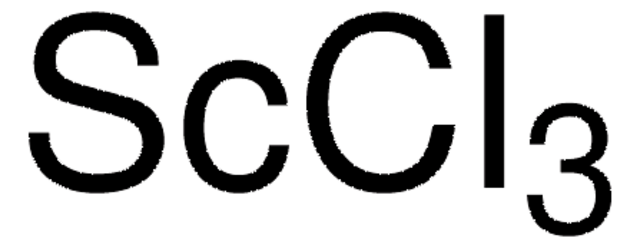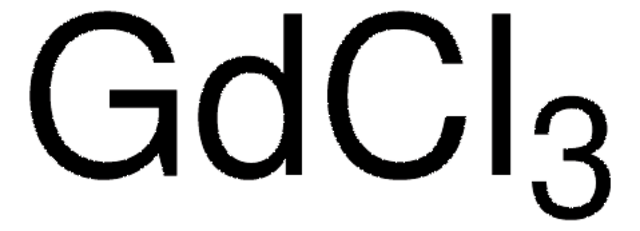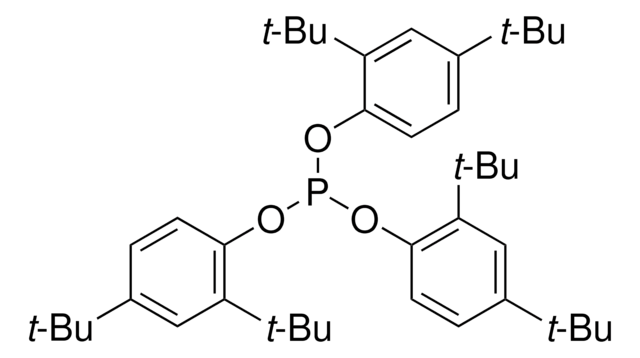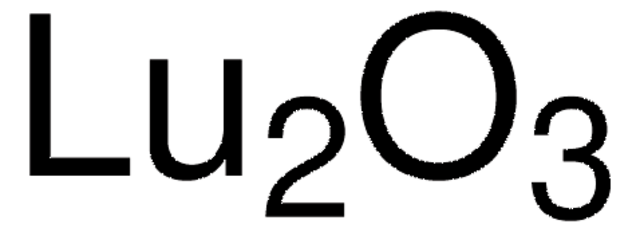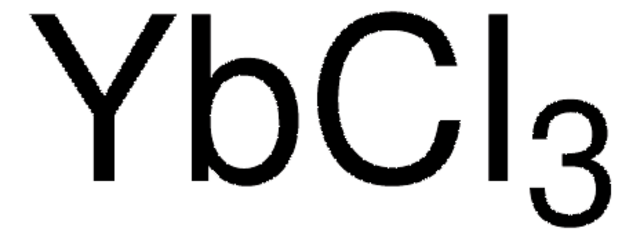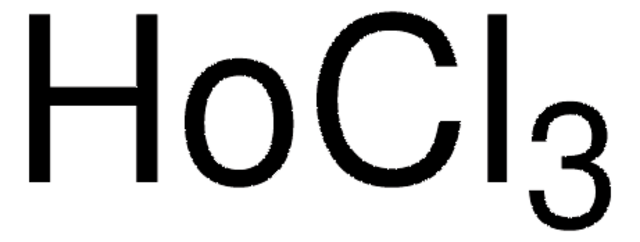450960
Lutetium(III) chloride
anhydrous, powder, 99.99% trace metals basis
Sinónimos:
Lutetium chloride, Lutetium trichloride
About This Item
Productos recomendados
grade
anhydrous
assay
99.99% trace metals basis
form
powder
reaction suitability
reagent type: catalyst
core: lutetium
impurities
≤150.0 ppm Trace Rare Earth Analysis
mp
905 °C (lit.)
density
3.98 g/mL at 25 °C (lit.)
SMILES string
Cl[Lu](Cl)Cl
InChI
1S/3ClH.Lu/h3*1H;/q;;;+3/p-3
InChI key
AEDROEGYZIARPU-UHFFFAOYSA-K
Application
- As a precursor to synthesize chiral bridged lutetium catalyst for asymmetric hydroamination.
- As a starting material to prepare doped lutetium oxide nanophosphors.
- To fabricate scintillation detectors such as lutetium aluminum garnet (LuAG).
For use with
Storage Class
11 - Combustible Solids
wgk_germany
WGK 2
flash_point_f
Not applicable
flash_point_c
Not applicable
ppe
dust mask type N95 (US), Eyeshields, Gloves
Certificados de análisis (COA)
Busque Certificados de análisis (COA) introduciendo el número de lote del producto. Los números de lote se encuentran en la etiqueta del producto después de las palabras «Lot» o «Batch»
¿Ya tiene este producto?
Encuentre la documentación para los productos que ha comprado recientemente en la Biblioteca de documentos.
Los clientes también vieron
Artículos
The rare earth elements impact nearly everyone in the world. All of the people living in advanced technological countries and almost all those living in third world countries utilize the rare earths in their everyday living—the car that one drives (gasoline is refined from oil using rare earth catalysts and catalytic converters reduce the polluting emissions from the automotive exhaust), watching the news on TV (the red and green colors in TV screens), the telephones and computers we use to communicate (the permanent magnets in speakers and disc drives), just to name a few examples.
Nuestro equipo de científicos tiene experiencia en todas las áreas de investigación: Ciencias de la vida, Ciencia de los materiales, Síntesis química, Cromatografía, Analítica y muchas otras.
Póngase en contacto con el Servicio técnico